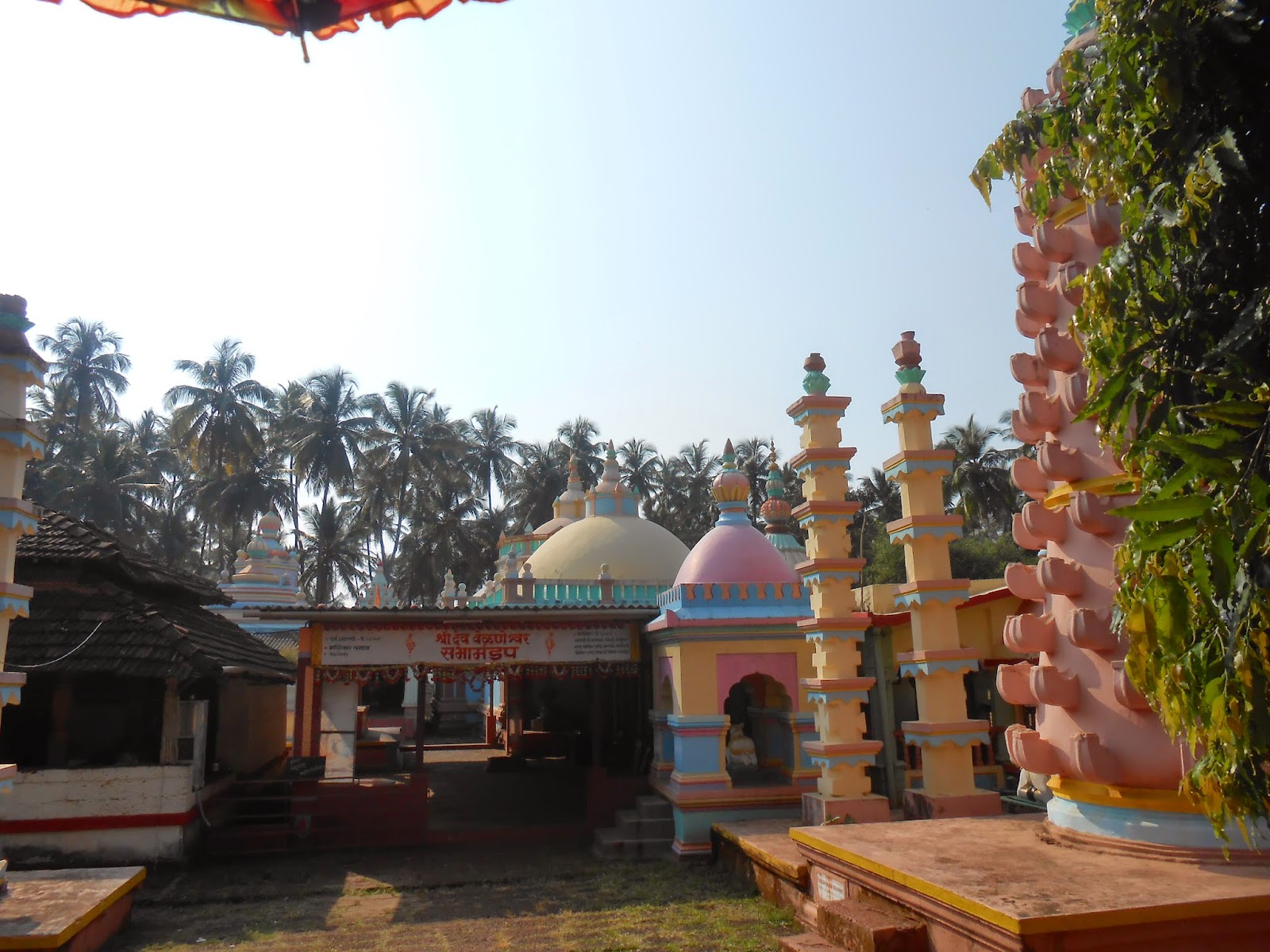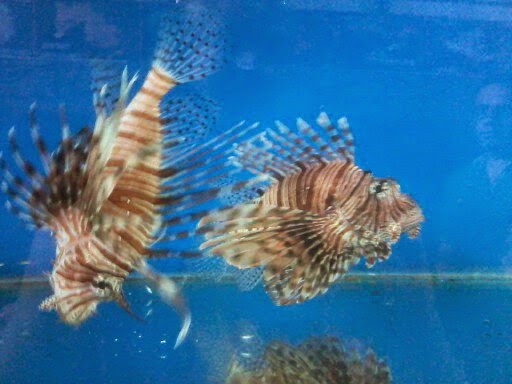GANPATIPULE
If you long to loll lazily on a beach, lapping up the lovely scene, sinking into the limpid waters, sans the annoying cacophony of humans and the din of vehicles, then Ganpatipule is the place for you!
If you long to loll lazily on a beach, lapping up the lovely scene, sinking into the limpid waters, sans the annoying cacophony of humans and the din of vehicles, then Ganpatipule is the place for you!
A stark contrast to the murky waters of Mumbai's beaches with their grimy sands; unlike the maddening crowds that litter our shores, the
lucent waters of Ganpatipule as they lovingly lap up the silver
sands are worth a visit!
And you have the whole beach to yourself too what with the crowd spread out evenly, lending enough privacy.
And you have the whole beach to yourself too what with the crowd spread out evenly, lending enough privacy.
Some beaches around the place are so pristine with no human in sight, that you’d wonder if you indeed are in India! A few quaint
temples dotting the landscape add to the serenity. A few days in balmy
Ganpatipule, certainly make for an idyllic ‘get- away’ from Mumbai.
Weary, sleepy and famished after an eventful overnight train trip we landed in Ratnagiri Station and headed straight for our MTDC accommodation.
The drive on tarred deserted roads flanked by shady trees
swaying gently in the morning breeze was indeed blissful. The red earth was a
reminder of the fecundity of the Konkan strip.
The vista from our rooms I must say was a treat to the eyes. Our spacious rooms opened up to into an equally spacious balcony offering a seamless glimpse of the seashore!
Mid-afternoon saw us visiting some quaint temples cocooned in
picturesque hamlets. A long drive and a jetty ride took us to the other side where lay a
few old shrines.
VELNESHWAR TEMPLE
Velneshwar Temple whose presiding deity is
Lord Shiva lies ensconced in the sleepy village of Velneshwar.
The dankness was definitely a welcome,
very rarely found in plush urban temples, which mostly reek of perfume and human
sweat.
With only the temple priest and a few visitors, the
silence was shattered by just an occasional tinkling of bells.
However, the
most striking thing was the way the idols were adorned with flowers in myriad
hues! Unlike the heaps of flowers strewn by ardent devotees seeking clemency and inadvertently concealing the idol in the process, this aesthetic floral array spoke of floral garnishing done by a grateful heart with the sole intention of beautifying the stony form of the Almighty.
Temple Courtyard
The olden day courtyard was swept clean of any traces of fallen leaves and obviously the nonexistence of tourists meant no litter!
The evening saw us take a peek into the old, dilapidated Jaigad fort
whose remnants echo of a weary past.
JAIGAD FORT
I’m sure many filmy shots would have captured the essence of the fort. And yes, that made the ramparts the perfect setting for an interesting photo-shoot.
Located at one end of the Sangameshwar River, the fort offers some spectacular views of the sea.
Day-2
In no mood to
travel, my son and I just opted for an Ayurvedic massage, with the rest of the
family having gone to explore the rest of Ratnagiri.
The massage center
was just a basic abode but the work was exemplary!
Day-3
Swayambu Ganpati Temple
A visit to Ganpatipule is never complete without a visit to the land's presiding deity -Lord Ganesha, after whom the place is named!
This shore temple believed to be existing
for 4000 years, has the sea-waves lashing at its precincts and an early morning visit is most befitting.
Rain clouds began to sprinkle their
contents and this is when my umbrella came to our rescue. We drove along
winding paths and our next halt was at Kavi Keshav Sooth’s Museum in Malgund.
Ancient Marathi poet Kavi Keshav Sooth’s
birth place is a humble abode, which would literally transport you to another
era!
As we entered this antiquated dwelling, it seemed as if time had stopped
still!
Going down memory lane my thoughts
spiralled down to my maternal and paternal houses in South India. The steps leading to the abode, the mud floor, the chambers within, the curios and the poet's works
cast a rare spell. Imagine what it would be to have been born
in that era!
Adjoining the abode is a library built in contemporary style, showcasing books written by the esteemed poet and other august poets and writers.
We then drove to a nearby aquarium which houses a fine collection of fish in myriad hues and shapes. It's worth a visit especially if you have little children and the visit won't take more than half an hour.
Seashells in various hues and shapes
Pracheen Kokan
Pracheen Kokan is certainly a 'must see'. A ‘make believe’ thematic
representation of ancient village life, the miens depicting fisher folk,
potters, blacksmiths, farmers et al, all replete with their tools, spring forth to life!
Miniature Layout
of Pracheen Kokan
The place perched
atop a hill is swathed in verdure and the flora abounding here would make you
wonder if 'Global Warming' was indeed being blown out of proportion!
A Lovely Hibiscus
Blossom Stooping Low to Catch Human Attention
A Towering
Observatory made of Logs
Children and
adults were both found scurrying atop the ladder to behold the panoramic views the place promises..
A figurine of a boatman ferrying across
Now for the interesting part-While most of
us know that Sage Parashurama the warrior in one of the 10 Avatars is closely
associated with Kerala, it was surprising to know that it was He who reclaimed
the sea to form the Western Coastal strip, which includes Konkan!
Konkan is also known as 'Parashurama Bhoomi' it seems..
Lote Parashuram
Temple is very close by, but unfortunately I had preferred the massage to the visit..
A den and a deer in the woods! You got to see to believe ;-)
Chhatrapati
Shivaji Maharaj on a boat!
The mud house of yore, the statues of which reflect bygone times
A cave temple housing a Shiv Linga lends a
serene atmosphere to the already scenic and sylvan surroundings. Stark, except
for the Shiv Linga adorned neatly with flowers plucked from nearby trees and
shrubs, divinity and tranquility seemed to have invaded the space suddenly, quelling our curiosity to explore further!
The musty
dankness within was so comforting that it entailed a deep and blissful communion
with the Lord!
Another interesting feature is a patch of garden with herbs and shrubs pertaining to the 12 zodiac signs!
Thibaw Palace
Quite nondescript, the palace stands overlooking a vast expanse of open land. In comparison to the many palaces in
India, this one may be bereft of any opulence, but its arched windows and wooden
interiors give it a certain charm and certainly the palace merits a visit. The place was under repair and hence the
scaffolding.
It was built between 1910 and 1911 and had housed the
Burmese King Thibaw and his Queen who were kept under house arrest here-the British having taken over
Burma following its partition from India.
It seems the King was accorded the respect befitting royalty. Tity, their great granddaughter is known to have married a local, named Shankar Rao Pawar and is supposed to have settled down in Ratnagiri!
Post lunch we visited a few more temples and hermitage of sages and our last halt was at Ratnadurg or Ratna Fort
Surrounded by the Arabian Sea on 3 sides, the fort
offers a panoramic breathtaking view of the sea below!
Ratnadurg also known as Bhagwati Durg, gets its name
from the temple of Goddess Bhagawati.
Durg although refers to the feminine power or Goddess(Durga), the word 'Durg' literally translates to 'Fort'!
After paying homage to the Goddess, we concluded out trip.
Best Time to Visit-Post monsoon is the
best time to make a trip here, when torrential rains abate leaving behind
vast stretches of verdant land and a stunning seascape.
Most hotels will not have an air-conditioner and this isn't needed either.
When tranquility is
the need of the hour and you just want to shut out the din of city life, delve
deep into the depths of these serene unspoilt beaches of Ganpatipule and you'd surely emerge
refreshed!





















.jpg)
.jpg)
.jpg)
.jpg)
.jpg)
.jpg)




.jpg)











.jpg)

.jpg)
.jpg)
.jpg)
.jpg)
.jpg)
.jpg)

















